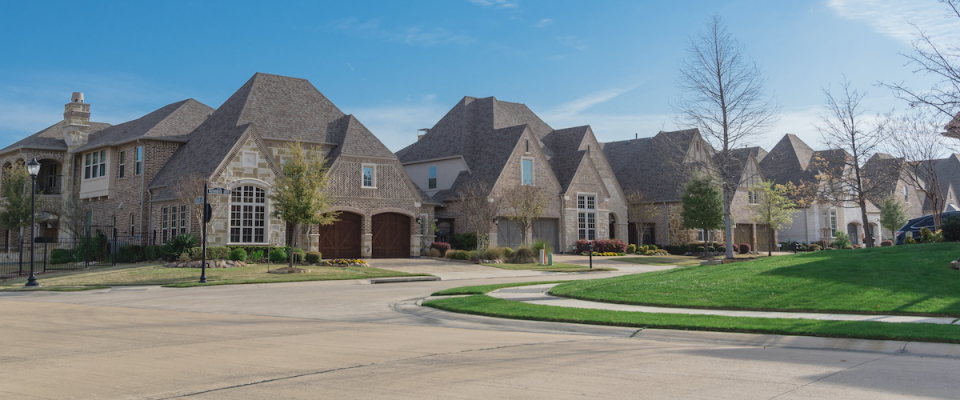What Drives Housing Choices of Refugees and Immigrants?

When you think of your dream home, what do you think of? Perhaps you envision a house with enough space for your whole family to be comfortable. Maybe you’ll be close to your extended family…or maybe you won’t, depending on your personal family dynamic. It will be in a safe neighborhood, perhaps with access to amenities that promote a healthier lifestyle, like green spaces and walking trails. School, work, grocery stores, and the doctor’s office will be easy to access. The home won’t cause you financial stress. It will feel like yours.
You may not be surprised to hear that many people look for these qualities when considering a place to live. With the study “Housing Choice, Transportation Equity, and Access to Opportunities in Refugee and Immigrant Communities,” professors at the University of Texas at Arlington sought to collect qualitative data about factors and values that caused refugee and immigrant populations in Dallas County, Texas to want to move. This demographic makes up a significant part of Dallas County’s population; almost one fourth of people who live there were born outside the United States. By better understanding the needs of this population, policies could be set in place that address inequity and make the community a more welcoming, accessible place for all. The paper focuses on the roles that primary and secondary mobility play in the housing choices of immigrants and refugees, though it does reveal many other influential factors.
When newcomers to the US initially settle, if their chosen location does not meet their expectations or needs, that often propels them to relocate. To determine what helps drive those transition decisions, the researchers interviewed people if they fulfilled one of these requirements:
- They were members of the Dallas County community who were planning to move in the next five years.
- They had recently (within the past five years) moved from their initial residence following their arrival in Dallas County.
They also had to be immigrants to or refugees in the US who were at least eighteen years old. Out of the 218 people initially interviewed, thirty-two participants qualified for the full interview. The participants were selected from a free community clinic in Dallas.
The researchers gave the thirty-two participants the open-ended prompt of, “Please discuss why you decided to move.” Based on the responses, the researchers concluded that three main themes drove transition decisions: The Multiple Dimensions of Home, The Neighborhood Experience, and Barriers and Bridges to Opportunity.
The Multiple Dimensions of Home
Participants indicated that the physical dwelling itself and the family within were influential in their deciding to move. Some participants cited the need for more space, issues with maintenance and property owners, and concerns relating to their dwelling’s safety. Living closer to family was only a motivator for some folks; others wanted to live farther away. Still others sought a sense of ownership of their space, like the ability to have their name on the lease. Of course, rising property costs were also a motivating factor.
The Neighborhood Experience
Outside of the home and the people in it, the neighborhood influenced participants’ moves as well. A safer neighborhood was a movement motivator, as were a quiet environment, amenities that promoted a healthier lifestyle (such as green spaces or walking trails), and a safe and efficient commute to work.
Barriers and Bridges to Opportunity
The work commute leads nicely into this final theme. Many participants were motivated to move by the hope for easier access to work/job opportunities and school. Responses highlighted the importance of finding and keeping employment.
Recommendations
Based on these findings, the researchers have developed eight recommendations for policy and practice to promote the coordination of transportation planning and housing choice. With these suggestions, the needs that were revealed with the interviews could be addressed:
- Enhance coordination between affordable housing and transportation planning.
- Prioritize neighborhood safety and quality of life.
- Improve access to employment and educational opportunities.
- Address food deserts and healthcare accessibility.
- Enhance public transportation options and connectivity.
- Address affordability and availability of suitable housing options.
- Expand research approaches with culturally informed and participatory methodologies.
- Construct a public health index, which can be used to evaluate the needs of a neighborhood.
ABOUT THE PROJECT
Diane Mitschke, University of Texas at Arlington; Anne Nordberg, University of Texas at Arlington; Stephen Mattingly, University of Texas at Arlington
This research was funded by the National Institute for Transportation and Communities, with additional support from Agape Clinic and the University of Texas at Arlington. To learn more about this and other NITC research, sign up for our research newsletter.
RELATED RESEARCH
- The Importance of Transportation to Refugees in Tucson, Arizona
- How Older Vietnamese Immigrants Get Around Town: Research Addresses Transportation Struggles
- Identifying Barriers Between Homeless Populations, Homeless Services Providers, and Transportation Providers
Photo by TrongNguyen/iStock
The National Institute for Transportation and Communities (NITC) is one of seven U.S. Department of Transportation national university transportation centers. NITC is a program of the Transportation Research and Education Center (TREC) at Portland State University. This PSU-led research partnership also includes the Oregon Institute of Technology, University of Arizona, University of Oregon, University of Texas at Arlington and University of Utah. We pursue our theme — improving mobility of people and goods to build strong communities — through research, education and technology transfer.
